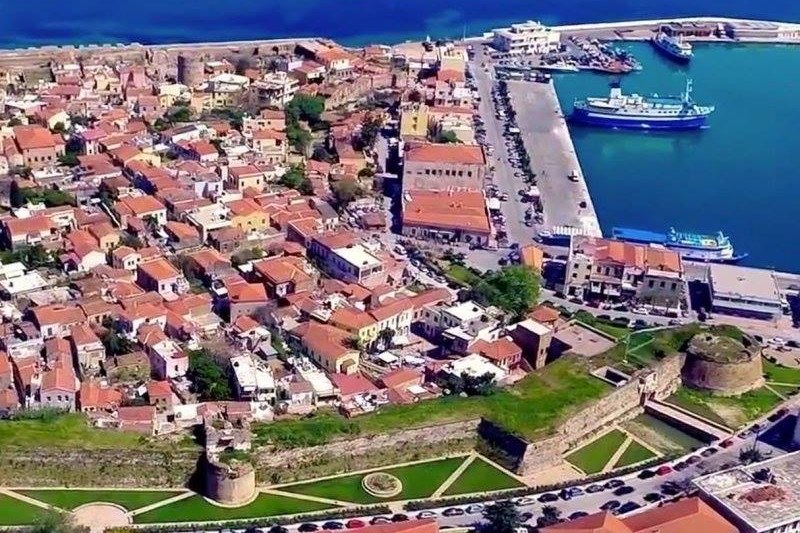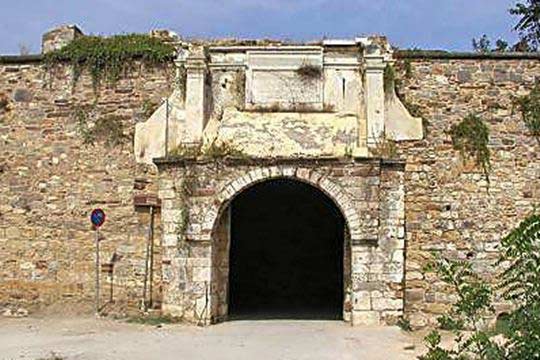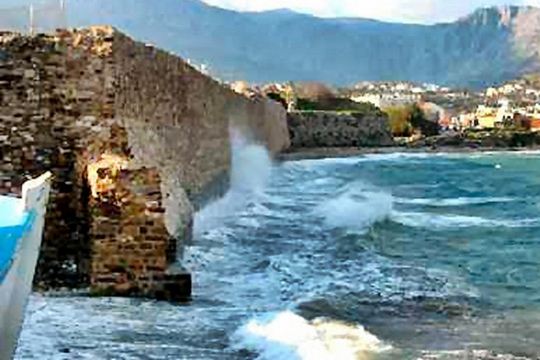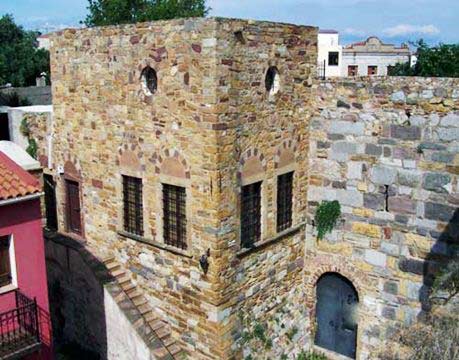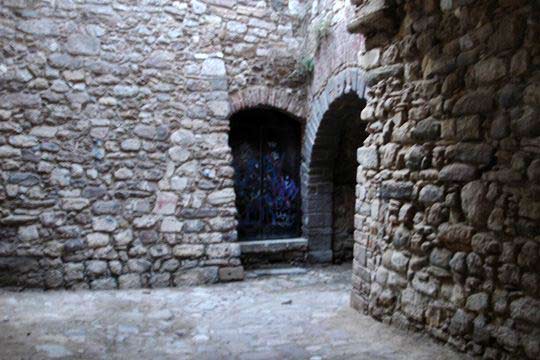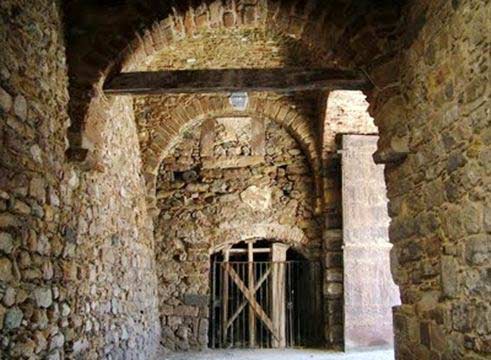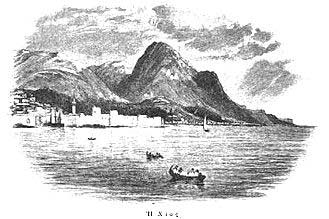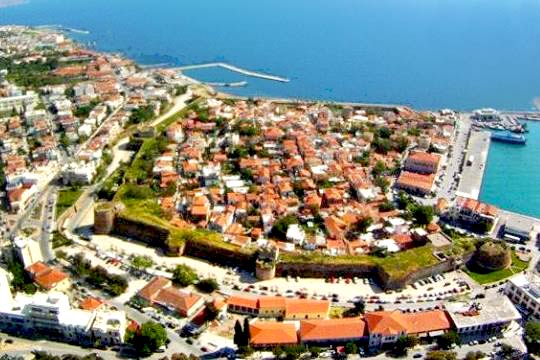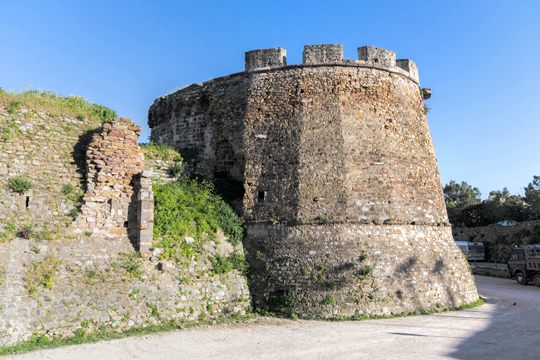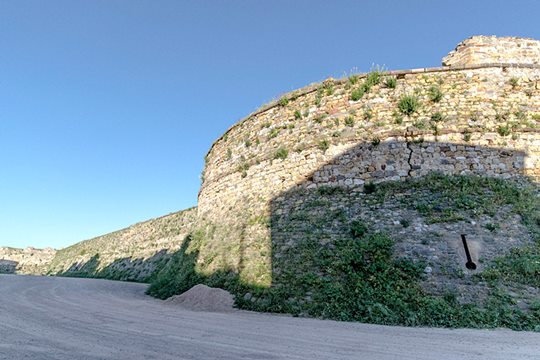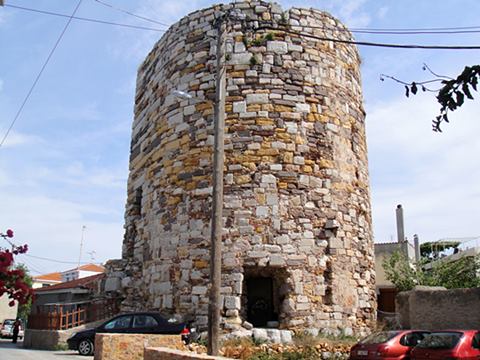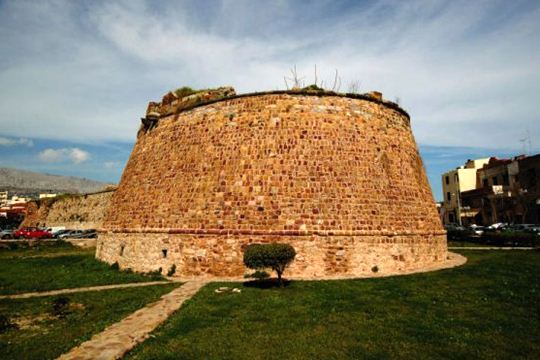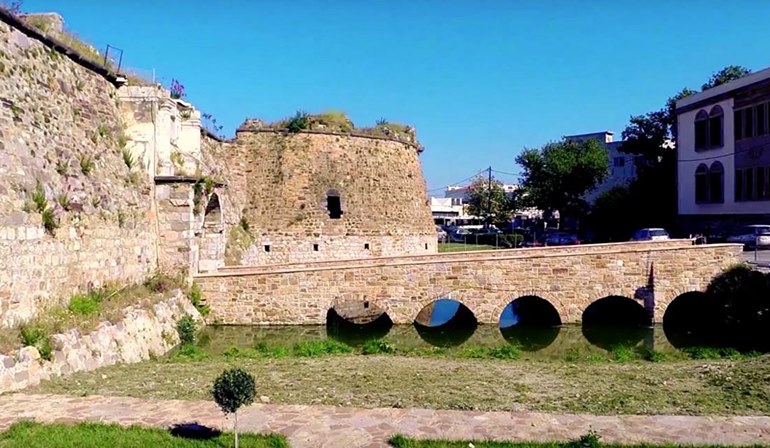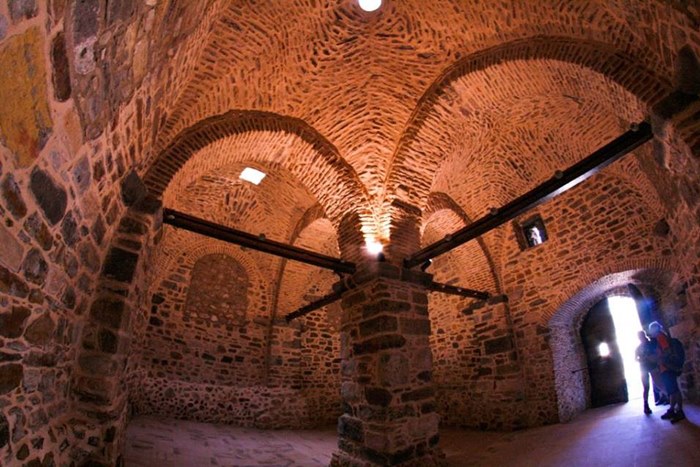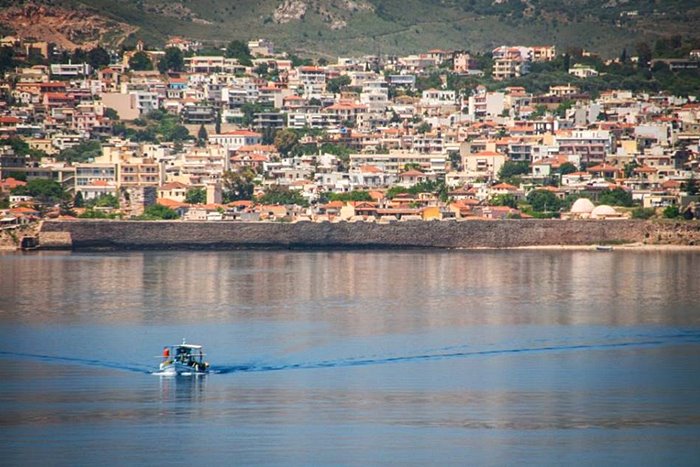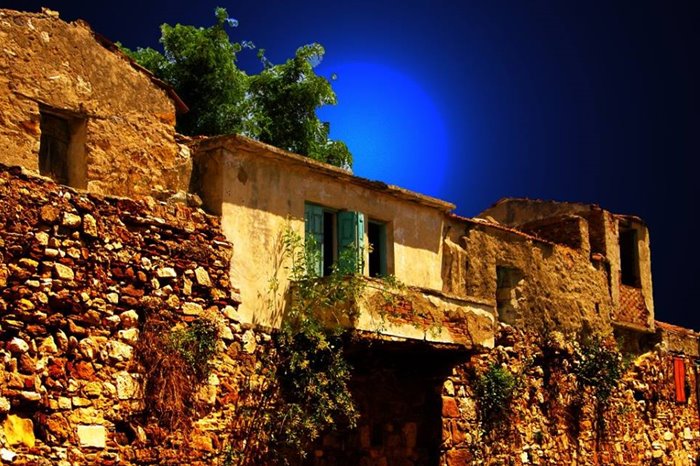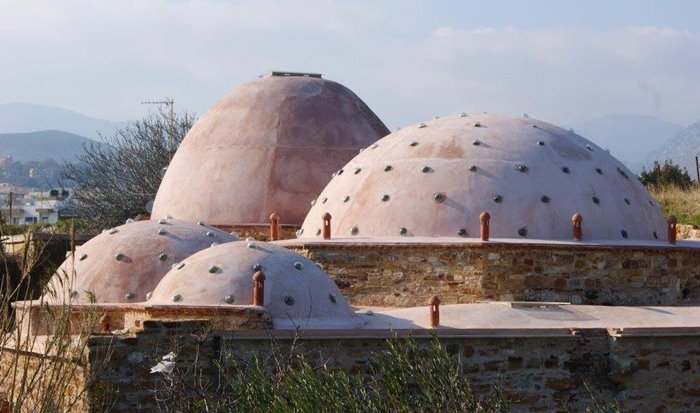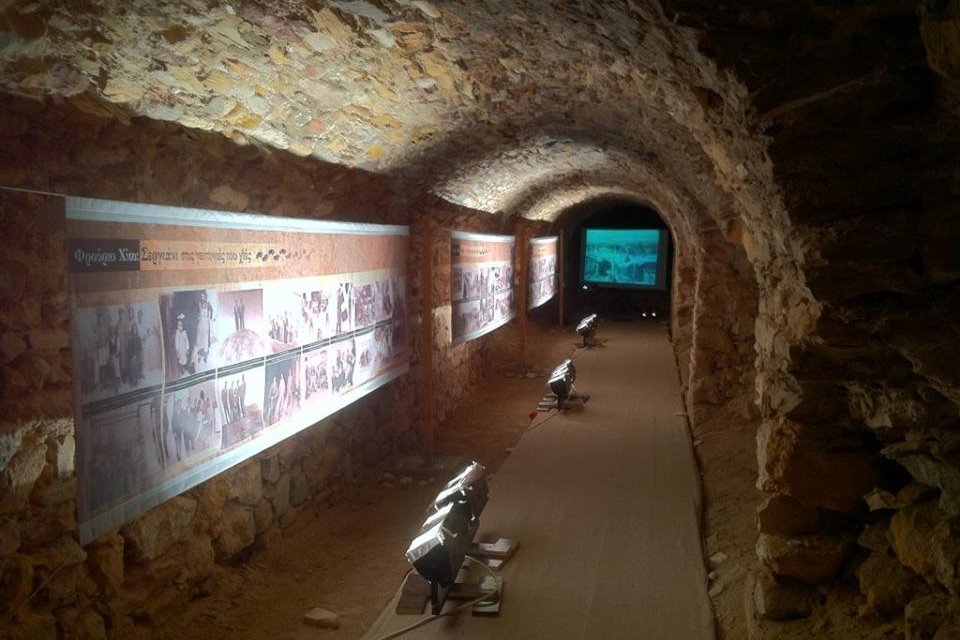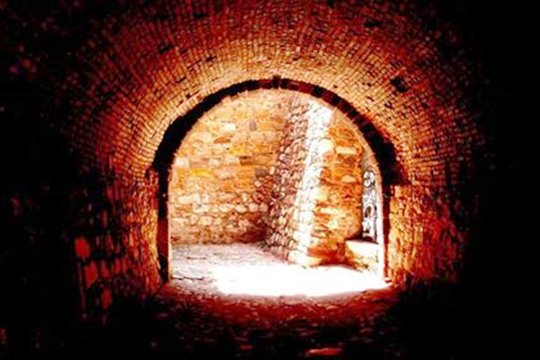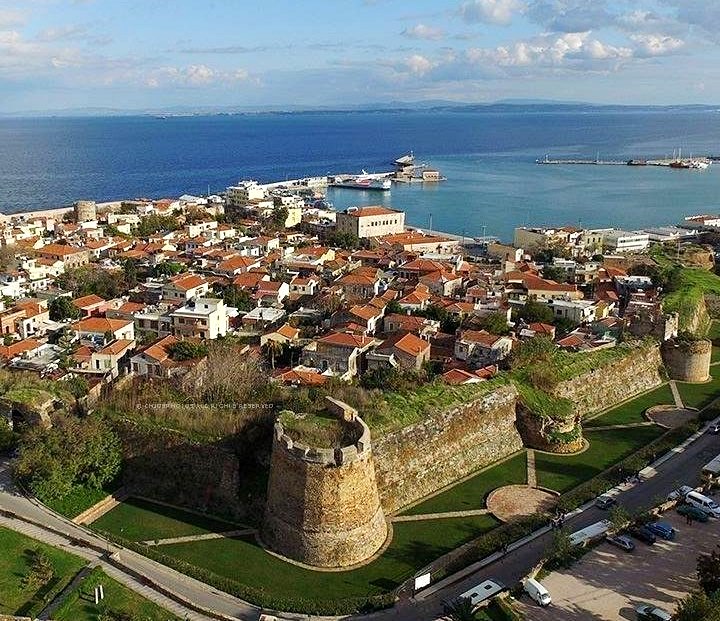Chios, Chios, North Aegean
Castle of Chios
| Location: |
| Port of Chios |
| Region > Prefecture: | 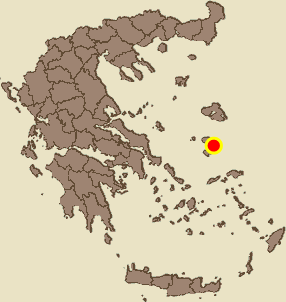 |
| North Aegean Chios | |
| Municipality > Town: | |
| City of Chios • Chios | |
| Altitude: | |
| Zero Altitude |
| Time of Construction | Origin | |
| 1328 | GENOAN |
|
| Castle Type | Condition | |
| Fortress-state |
Relatively Good
|
The castle of Chios is located at the north side of the city’s port. It covers an area of 180,000 m2 and it includes an inhabited area with a population of 650.
History
The castle of Chios was constructed in the medieval period with its first construction phase having started in the 10th century by the Byzantines. The structures surviving to this day are part of later construction and expansion dated to the time when the Genoese, who maintained commercial concerns, ruled the island during the 14th to the 16th century.
The construction of the castle started in 1328 by the Genoan lord of the island Martino Zaccaria. In 1329 it was captured by the Byzantines but the Genoans returned in 1346. The Genoan presence lasted until 1556. During this period, the island was administrated by Maona, a commercial company. Since 1362, the heads of the company belonged to the family of Giustiniani.
In 1556 the forces of the Ottoman Sultan Souleiman occupied the island. In 1694, the Venetians captured the island for a brief period of 6 months. Then the Turtks came back and stayed there until 1922, when Chios became part of Greece.
Structure, Fortification & Buildings
The castle is entered over the recently filled wide moat that surrounds the castle through the southern Central Gate (Porta Maggiore), which the Venetians reconstructed in 1694.
Near the gate and through an arcade, in an enclosed area, one can find the Ioustiniani Palace, a building of the 15th century that has recently been renovated and it is now a worthy permanent exhibition.
In the same area, one can also see the prison, as well as the tomb of Kara Alis. Also, along the central road of the Castle, stands the church of Saint George and - to the north - the Turkish Baths. The Krya Vrysi (Cold Fountain), a semi-subterranean water cistern built during the Genoese occupation, is one of the two most important structures inside the castle. The second one is a tower known as “Kulas”.
| First entry in Kastrologos: | July 2012 | Last update of info and text: | November 2019 | Last addition of photo/video: | November 2019 |
Sources
- Article by Olga Vassi in the website ΟΔΥΣΣΕΥΣ of the Greek Ministry of Culture Κάστρο Χίου (Greek only)
- Website ChiosOnline - Κάστρο της Χίου (Greek only)
- Website ΤΟ ΚΑΣΤΡΟ ΤΗΣ ΧΙΟΥ…ΕΝΑΣ ΧΑΜΕΝΟΣ ΠΑΡΑΔΕΙΣΟΣ - Chios Castle in English
- Website kastrochiou.blogspot.gr
- Pictures sent by Danti Maria
- ΑΡΧΑΙΟΛΟΓΙΚΟΝ ΔΕΛΤΙΟΝ, τόμος 50 (1995), τεύχος Β2 - Χρονικά, σελ. 710-714
|
|
| Access |
|---|
| Approach to the monument: |
| Many access points from the port of Chios |
| Entrance: |
| Ticket entrance. Limited hours. |



